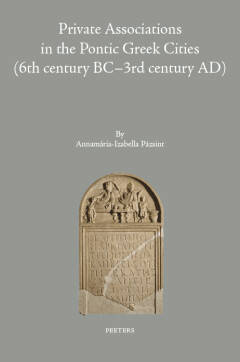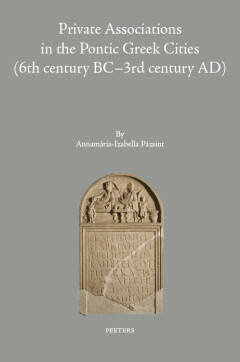
- Afhalen na 1 uur in een winkel met voorraad
- Gratis thuislevering in België vanaf € 30
- Ruim aanbod met 7 miljoen producten
- Afhalen na 1 uur in een winkel met voorraad
- Gratis thuislevering in België vanaf € 30
- Ruim aanbod met 7 miljoen producten
Zoeken
Private Associations in the Pontic Greek Cities (6th Century Bc-3rd Century Ad)
A-I Pazsint
€ 145,00
+ 290 punten
Omschrijving
This book examines private associations from the Pontic Greek cities (6th century BC-3rd century AD), based on epigraphic evidence (205 inscriptions which record 114 associations). The approach is that of an ancient social historian and takes into consideration the participants, the practices and the impact of the phenomenon of these organisations, in order to understand Pontic society and the way it functioned at a smaller scale, that of the associations. It is arranged as chapters, plus a Glossary and two extensive appendices (catalogues of epigraphic sources and members). The book reveals that, in the Pontic area, the associations had a fragmentary character and were influenced by the political, social and economic evolution of the region, with a couple of cities on the western and northern shores pre-eminent; and secondly, that the Pontic associative phenomenon had, overall, a relatively marginal and time-limited role when compared with other parts of the ancient world (due not only to the state of the research of the Greek Black Sea settlements themselves but also to local characteristics).
Specificaties
Betrokkenen
- Auteur(s):
- Uitgeverij:
Inhoud
- Aantal bladzijden:
- 407
- Taal:
- Engels
- Reeks:
- Reeksnummer:
- nr. 35
Eigenschappen
- Productcode (EAN):
- 9789042947184
- Verschijningsdatum:
- 31/12/2022
- Uitvoering:
- Hardcover
- Formaat:
- Genaaid
- Afmetingen:
- 165 mm x 245 mm
- Gewicht:
- 385 g

Alleen bij Standaard Boekhandel
+ 290 punten op je klantenkaart van Standaard Boekhandel
Beoordelingen
We publiceren alleen reviews die voldoen aan de voorwaarden voor reviews. Bekijk onze voorwaarden voor reviews.











